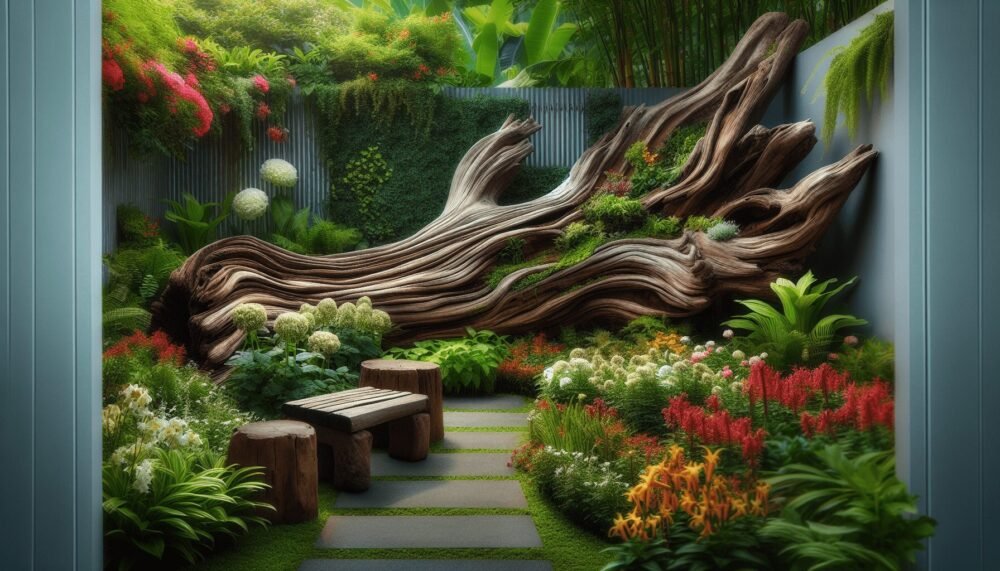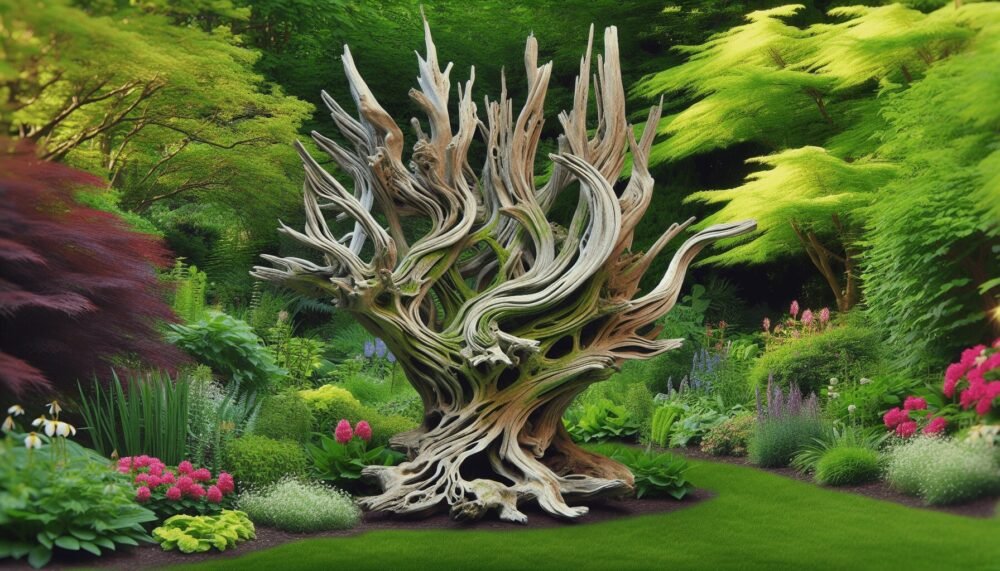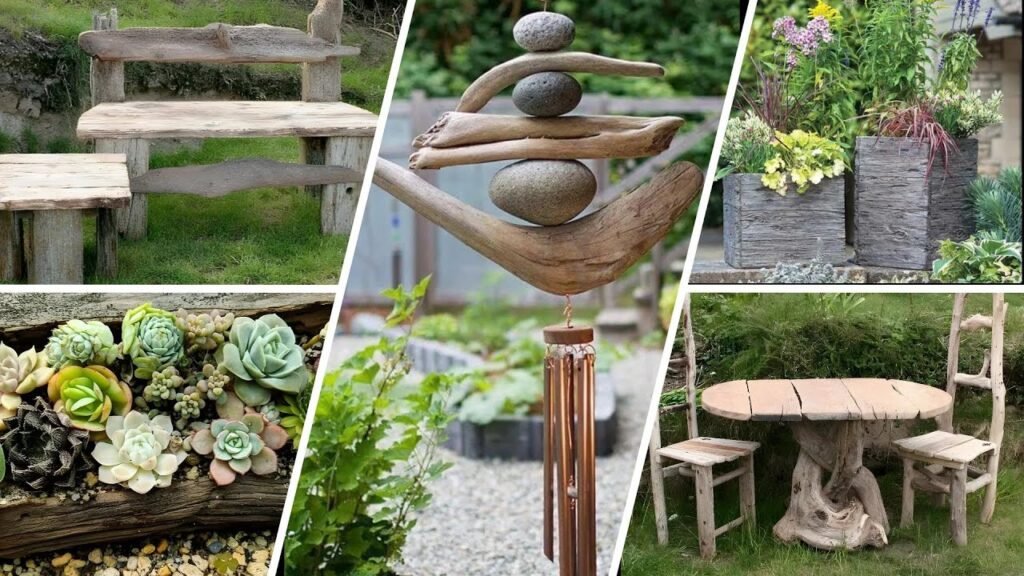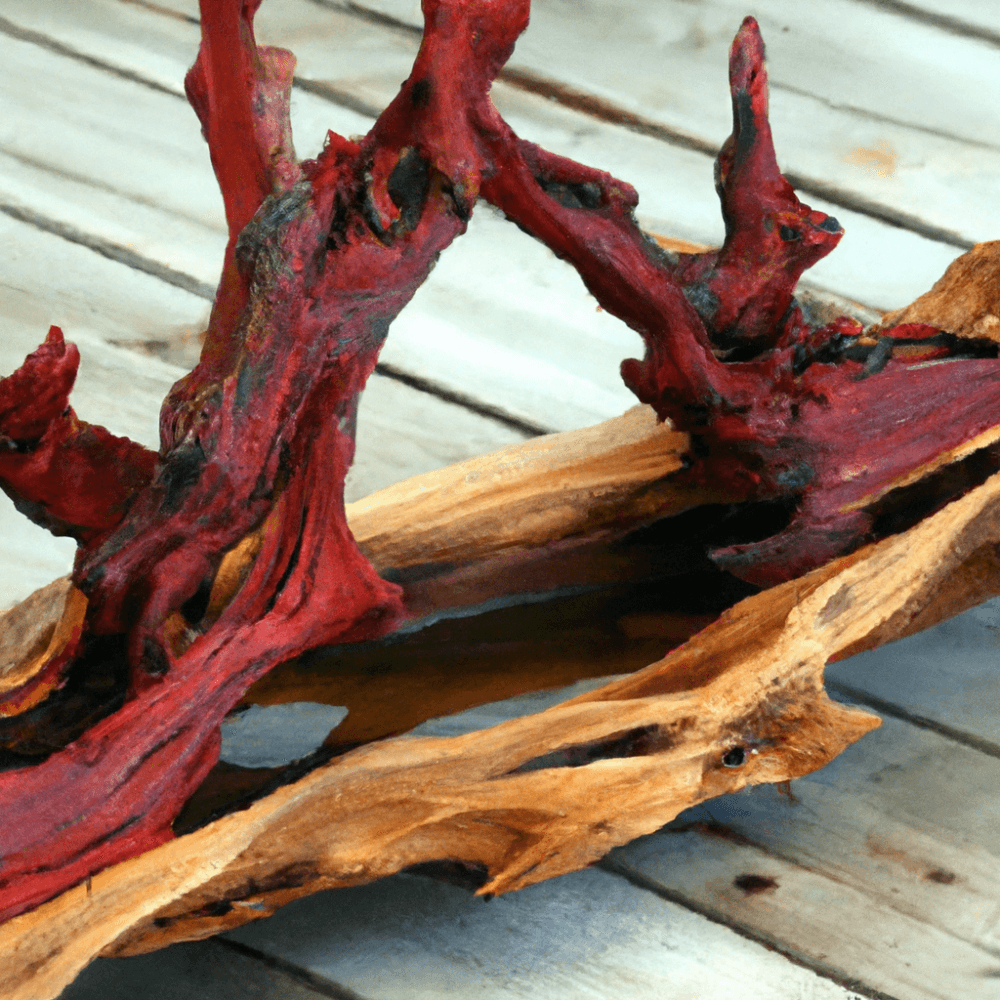Welcome to “Driftwood Front Yard,” where you will discover how to transform your outdoor space into a serene, coastal retreat using nature’s bounty, driftwood. Picture yourself stepping out into a yard adorned with beautifully weathered wood pieces, each telling its own story of time and tide. In this captivating article, you’ll learn creative ways to incorporate driftwood into your landscaping, from elegant sculptures to practical garden features. Let your imagination set sail as you turn your front yard into a picturesque display of natural artistry. Have you ever wondered how you could transform your front yard into a unique and captivating space that stands out in your neighborhood? If so, you might find inspiration in the creative use of driftwood. Let me take you on a journey through imaginative ideas and practical tips for incorporating driftwood into your front yard to create an enchanting and sustainable landscape.
What is Driftwood?
Driftwood is wood that has been washed onto shorelines, lakes, and rivers by the forces of wind, waves, and tides. Typically, driftwood has been weathered and aged over time, giving it a distinct, rustic appearance that makes it incredibly appealing for various artistic and decorative uses. Its natural beauty and organic texture add a whimsical charm to any space.
The Appeal of Driftwood in Landscaping
Unique Aesthetic
Incorporating driftwood into your front yard design introduces a unique aesthetic that combines natural beauty with artistic expression. Each piece of driftwood is one-of-a-kind, ensuring that your front yard remains distinctive and original.
Sustainable and Eco-Friendly
Utilizing driftwood is an environmentally friendly choice since it is a recycled material. By repurposing driftwood, you are contributing to the reduction of waste and helping preserve natural habitats.
Versatility
Driftwood’s versatility allows it to blend seamlessly into various landscaping themes, whether you prefer a coastal, rustic, or modern look. Its adaptability makes it an excellent choice for creating focal points, borders, or even functional yard elements.

Planning Your Driftwood Front Yard
Assess Your Space
Before you begin, take a careful look at your front yard. Identify the areas where you might introduce driftwood elements. Small yards might benefit from subtle accents, while larger spaces can accommodate more substantial installations.
| Factors to Consider | Questions to Ask |
|---|---|
| Yard Size | How much space do you have available? |
| Natural Light | Does your yard get a lot of sun or shade? |
| Existing Vegetation | What plants and trees are already present? |
Pick a Theme
Choosing a theme will help guide the design process and ensure a cohesive look. Here are some popular options:
- Coastal Theme: Perfect for bringing the beach to your doorstep.
- Rustic Theme: Ideal for a countryside or forest vibe.
- Modern Theme: Great for a sleek, minimalist look.
Gather Materials
You’ll need driftwood pieces of various shapes and sizes, which can be found along seashores or purchased from specialty shops. Additionally, consider complementary materials such as rocks, shells, and plants to enhance your design.
Design Ideas for a Driftwood Front Yard
Driftwood Pathways
Create welcoming walkways with driftwood as borders or embedded into gravel or soil. The organic lines add an inviting touch.
Steps to Create Driftwood Pathways
- Plan Path Layout: Use a garden hose to outline the desired shape.
- Prepare the Ground: Clear the path area and level the soil.
- Lay Driftwood Pieces: Arrange driftwood along the edges or integrate them within the path.
- Fill Gaps with Gravel: Secure the driftwood in place by filling gaps with gravel or small stones.
Driftwood Planters
Driftwood planters can be used to highlight your favorite plants and flowers. The contrast between the wood and greenery creates a striking visual effect.
Steps to Make Driftwood Planters
- Select Driftwood Pieces: Choose pieces that can hold or support plant containers.
- Prepare Containers: Use pots that fit well within or on the driftwood.
- Plant Your Favorites: Fill the pots with soil and plant your chosen shrubs or flowers.
- Position in Yard: Place the driftwood planters in your yard, focusing on corners or focal points.
Driftwood Sculptures
Transform larger pieces of driftwood into stunning sculptures or focal points. These can range from abstract forms to more recognizable shapes like animals or abstract modern art.
Tips for Creating Driftwood Sculptures
- Select a Statement Piece: Look for an impressive piece that draws attention.
- Stability First: Ensure the sculpture stands securely and can withstand wind and weather.
- Simple Tools: Use basic tools like a saw, chisel, and sandpaper if you need to refine the shape.
Driftwood Fencing and Trellises
Define spaces and support climbing plants with driftwood fencing or trellises. This functional element also adds to your yard’s visual appeal.
Building a Driftwood Fence
- Gather Similar Sized Pieces: Collect driftwood that is straight and similar in length.
- Install Posts: Securely place the main support posts in the ground.
- Attach Driftwood Horizontally or Vertically: Use nails or screws to attach the driftwood to the posts.
- Enhance with Climbing Plants: Add climbing plants to further decorate the fence.
Driftwood Garden Edging
Use driftwood to edge your garden beds, creating a natural division between your grass, flowers, and other planted areas.
Steps for Garden Edging
- Outline the Area: Use a string or garden hose to delineate the edge.
- Bury the Base: Slightly bury the driftwood pieces into the soil for stability.
- Vary the Heights: Position driftwood pieces of varying heights for a more organic look.

Choosing Plants to Complement Driftwood
Picking the right plants can enhance the aesthetic of driftwood. Consider using native plants that thrive in your local environment to support local ecosystems and ensure sustainability.
Plant Suggestions for Different Themes
| Theme | Plant Types |
|---|---|
| Coastal | Beach grass, succulents, sea lavender, agave |
| Rustic | Ferns, wildflowers, hostas, ornamental grasses |
| Modern | Bamboo, boxwood, sedges, structured perennials |
Care and Maintenance
Maintaining your plants and driftwood installations ensures they remain beautiful and functional. Regularly check for signs of wear or damage and treat plants according to their specific needs.
Incorporating Water Features
Adding a water feature can enhance the tranquility and beauty of your front yard. Driftwood can be used to create natural-looking fountains, ponds, or waterfalls.
Creating a Driftwood Fountain
- Choose a Location: Select a spot that can accommodate a water feature.
- Source a Pump: Get a suitable water pump for your fountain.
- Arrange Driftwood: Place driftwood around the pump to create a natural look.
- Add Water and Plants: Fill with water and add aquatic plants if desired.
Driftwood Ponds
Driftwood can enhance the edges and surroundings of a pond, providing both aesthetic and functional benefits.
Steps for a Driftwood Pond
- Dig the Pond: Excavate the area for your pond.
- Install a Liner: Place a pond liner to hold the water.
- Position Driftwood: Arrange driftwood around the edges and within the pond.
- Fill and Plant: Add water and aquatic plants to complete the look.
Lighting Your Driftwood Yard
Proper lighting enhances the beauty and safety of your driftwood front yard, creating a magical ambiance after dark.
Types of Lighting
- Solar Lights: Eco-friendly and easy to install.
- LED String Lights: Perfect for wrapping around driftwood structures.
- Ground Spotlights: Highlight specific features like sculptures and water elements.
Tips for Effective Lighting
- Layer Your Lighting: Use different types of lights for various effects.
- Highlight Features: Focus lights on key driftwood elements and plants.
- Safety First: Ensure pathways and entrances are well-lit for safety.
Seasonal Decorations with Driftwood
Driftwood offers a versatile base for seasonal decorations, allowing you to update and refresh your yard’s appearance throughout the year.
Ideas for Each Season
- Spring: Integrate pastel-colored flowers and Easter-themed items.
- Summer: Add seashells, starfish, and bright blooms.
- Fall: Use pumpkins, gourds, and autumn leaves.
- Winter: Decorate with fairy lights, pinecones, and winter greenery.
DIY Seasonal Driftwood Projects
Engage in fun, seasonal projects that involve the whole family. Crafting with driftwood not only beautifies your yard but also creates lasting memories.
Conclusion
Transforming your front yard with driftwood is a rewarding project that combines creativity, sustainability, and beauty. The organic textures and forms of driftwood lend themselves to a myriad of designs that cater to different styles and tastes. Whether you opt for driftwood pathways, planters, sculptures, or water features, your front yard will stand out as a neighborhood gem.
Remember, each piece of driftwood has its own story and natural charm, making your landscape not just beautiful, but also unique. So go ahead, let your imagination run free, and create a front yard that truly reflects your personality and love for the natural world. Happy gardening!









